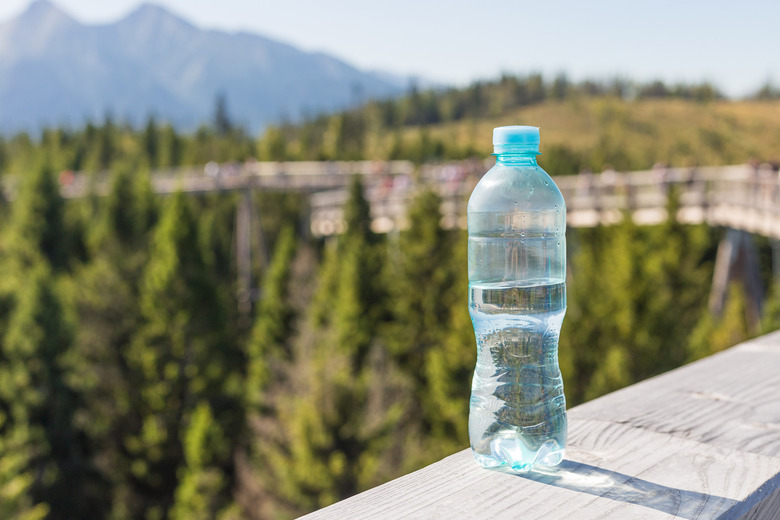Revolutionary Biodegradable Plastic Uses Bacteria To Eat Itself
The world has a big plastic problem that it's yet to fix. We're trying to reduce our reliance on plastic, but that's seemingly impossible in modern society. The material is too important for our daily lives despite its impact on the environment. Plastics also hurt living organisms directly, as microplastics are routinely found inside them. That includes the human body, with new research showing that microplastics can end up in all sorts of organs.
One way to reduce the impact of plastic waste on the environment is to develop better ways to break it down. One such biodegradable plastic idea comes from a team of researchers at the Shenzhen Institute of Advanced Technology, Chinese Academy of Sciences.
The scientists were able to create a type of living plastic that contains bacteria spores. The spores are inactive while the containers are being used. However, when the material needs to be disposed of, the bacteria can be activated, so they wake up and start consuming the plastic.
Bacteria are dormant in spore form, and that's how they can survive the harshest environmental conditions. When the environment is favorable, the bacteria will become active again. That's one piece of the puzzle. Bacteria spores can survive the process of manufacturing living plastics. The other concern is selecting the type of bacteria that likes to eat plastics when active.
The Chinese Academy of Sciences researchers created plastic products containing bacteria spores that would eventually destroy the plastic. They chose a form of Bacillus subtilis bacteria, engineered to secrete an enzyme that can break down plastic, lipase BC. They took the enzyme from a different bacteria, Burkholderia cepacia.
Exposed to heavy metal ions, the bacteria turned into spores. Prof. Zhuojun Dai's team combined the spores with PCL (polycaprolactone) plastic beads. They melted the mixture and formed pieces of solid plastic. The bacteria was not harmed, and the plastic looked and behaved like regular plastic. The "living plastic" wasn't living at all as long as the bacteria stayed in spores form.
The researchers developed two methods to activate the microorganism. One involves exposing the plastic to an enzyme. This would wake up the bacteria, which would then consume the plastic. The bacteria would need 6-7 days to dispose of a container.
Another option is compositing the plastic. Destroying the containers also activated the bacteria. In this scenario, the bacteria needed 25 to 30 days to degrade the plastic once it was buried in soil. Regular PCL takes 55 days to degrade to a level the human eye can't see.
As for the viability of the bacteria-laden plastic, the team immersed the living plastic in Sprit for two months. The PCL container maintained a stable shape, proving it works just like a regular plastic container until it's exposed to the right conditions that activate the bacteria.
The researchers also looked at mixing the plastic-eating spores with other plastics. They were able to mix spores of a bacteria that carried green fluorescent plasmids with various kinds of plastics: PBS (polybutylene succinate), PBAT (polybutylene adipate-co-terephthalate), PLA (polylactic acid), PHA (polyhydroxyalkanoates), and even PET (polyethylene terephthalate).
They released the spores via physical grinding and found the bacteria was activated, releasing the fluorescent protein. This experiment shows there's scope for using similar tech to attempt to create other types of biodegradable plastics in the future. The bacteria survive manufacturing processes that involve temperatures as high as 300C (572F).
This isn't the only research on the matter. New Atlas points out that a team at UC San Diego has created TPU (thermoplastic polyurethane) containing spores. This plastic will start degrading when dumped in a landfill.
Meanwhile, the Chinese Academy of Sciences study is available in Nature Chemical Biology.
